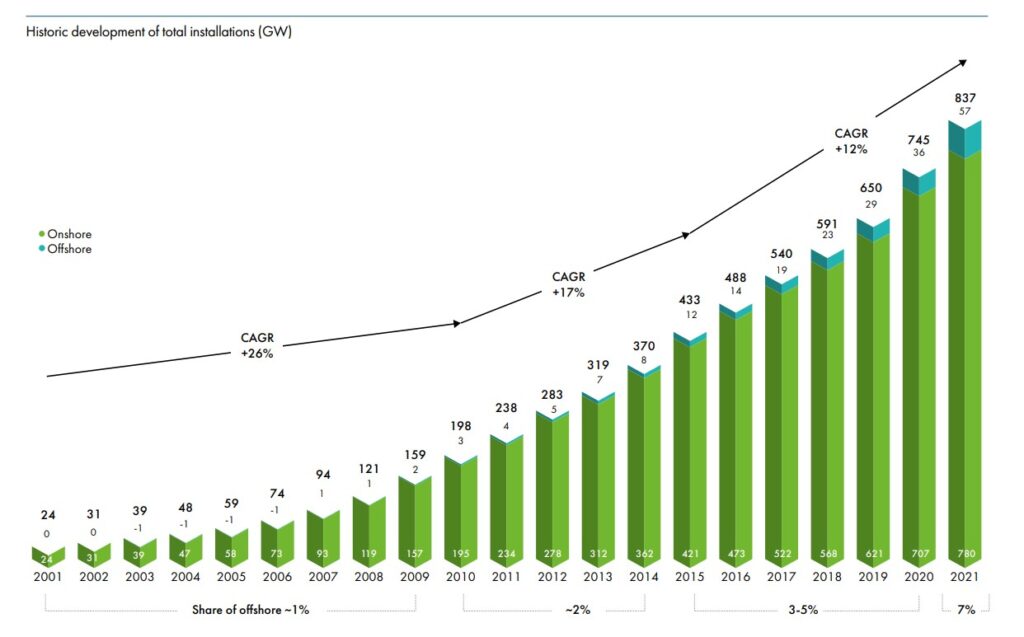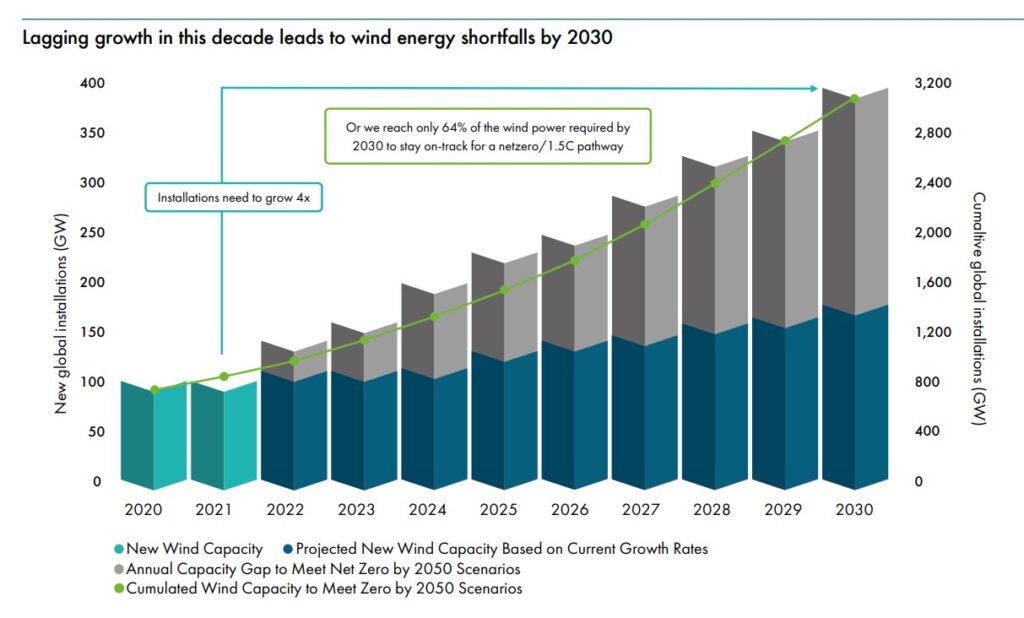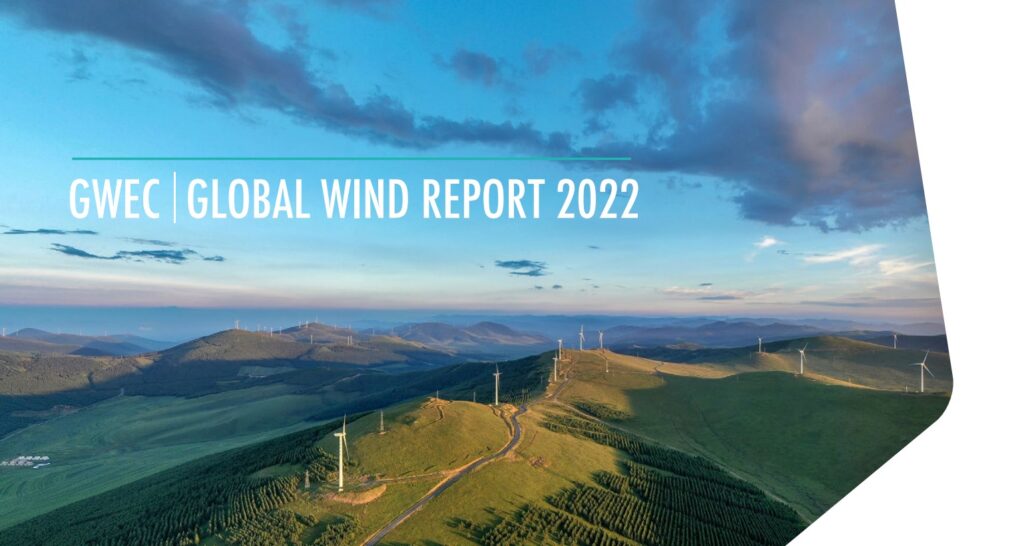GWEC’s Global Wind Report provides a thorough overview of the onshore and offshore wind market globally, using the latest data and providing analysis on forecasts, market growth and emerging markets.
Key points
- Despite being the second year of the COVID-19 pandemic, 2021 saw 94GW of new installations, making it the second-best year ever for the wind industry
- Total global wind power capacity is at 837 GW, equivalent to avoiding 1.2 billion tonnes of CO2 annually
- Of particular interest to Enertechnos, the global offshore wind market saw three times the volume of offshore wind compared to 2020
- For the UK, 2021 was a record year for offshore wind installations, with over 2.3 GW connected to the grid and currently we lead the global market for floating offshore wind, with a total of 139 MW installed so far
- There is huge global potential for floating offshore wind and GWEC expects significant expansion of such installations in the coming years
- Grid investment needs to scale up in every region of the world as current investment is not enough. GWEC considers this ‘extremely urgent’, identifying a necessary scale-up of three times than current investment
- Wind needs to grow four times by the end of the decade to stay on the 1.5C pathway and net zero by 2050.
‘Floating offshore wind has the potential to expand rapidly to deliver the capacity the world needs’
(Feng Zhao – Head of Strategy and Market Intelligence, GWEC
‘We are collectively falling behind in our climate action goals…wind energy is not growing nearly fast or widely enough to realise a secure and resilient global energy transition’
(Joyce Lee – Head of Policy and Projects, GWEC)
Summary
Whilst current progress is promising, the report outlines that there is still much work to be done to successfully achieve net zero plans for the wind industry, including large-scale investment in grid infrastructure to support the transition.
The overarching find of the report is that a massive scale-up is necessary to meet the objectives of the Paris Agreement. Whilst cumulative installations are reaching a substantial amount of total GW installed (see graph 1 below), it is still not enough. To stay on the road to net zero, annual wind installations must quadruple (see graph 2 below).

Cumulative total of wind installations to present (GWEC)

Installations need to quadruple to meet 1.5C by 2030 and net zero by 2050
‘To achieve greater coordination and impact in grid and infrastructure planning, policymakers, system operators, regulators, utilities, the industry and the wider innovation community should: ensure national development plans for grid infrastructure are in place, looking at least 10-15 years ahead’
(GWEC Report 2022, Part 5 – p.88)
To read the report in full, click the link below.
These reports from GWEC and the IPCC, as well as the Energy Security Strategy which is expected to be announced on Thursday, all point to a requirement for increased grid investment and improvements to efficiency by means of innovative technology – exactly what we do at Enertechnos. For more information on our technology, click the link below.


